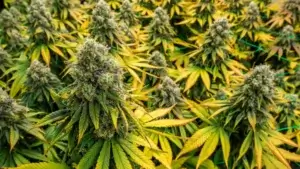Definition:
A female plant in cannabis is the plant responsible for producing flowers (buds) rich in cannabinoids like THC and CBD, which are used for consumption and medicinal purposes.
Purpose and Usage
Female cannabis plants are the most valuable in cultivation because their flowers are the primary source of cannabinoids and terpenes. They are essential for creating cannabis products like flower, concentrates, and edibles. Female plants are typically grown in environments that prevent pollination to ensure seedless buds, known as sinsemilla.
How It Relates to Cannabis
- Characteristics of Female Plants:
- Produce flowers covered in trichomes, which contain cannabinoids and terpenes.
- Develop pistils, the hair-like structures on buds, to catch pollen for reproduction.
- Do not produce seeds unless pollinated by male plants.
- Role in Cannabis Cultivation:
- Cultivators prioritize female plants for their ability to produce high-potency buds.
- Preventing pollination ensures sinsemilla, which yields seedless and more potent flowers.
- Feminized seeds or cloning from female plants are common practices to ensure a female crop.
- Reproductive Function:
- If exposed to male pollen, female plants produce seeds instead of focusing energy on developing cannabinoid-rich flowers.
- In the absence of males, female plants grow resinous, potent buds optimized for consumption.
Common Misconceptions
- Female plants always produce seeds: Female plants only produce seeds when pollinated by male plants.
- Male plants are necessary for cultivation: While male plants are needed for breeding, they are avoided in commercial cultivation focused on bud production.
- All cannabis plants are the same: Only female plants produce the cannabinoid-rich buds used for consumption, while male plants produce pollen.
Alternatives
- Male Plant: Produces pollen for breeding but does not develop cannabinoid-rich buds.
- Hermaphrodite Plant: A plant with both male and female traits, which can self-pollinate and produce seeds but often leads to lower-quality yields.
Importance of Female Plant
The female plant is the cornerstone of cannabis cultivation, providing the flowers that form the basis of nearly all cannabis products. Its ability to produce cannabinoid-rich buds makes it invaluable for both recreational and medicinal applications. By understanding the significance of female plants and ensuring their proper cultivation, growers can optimize yields and produce high-quality cannabis for various uses.





